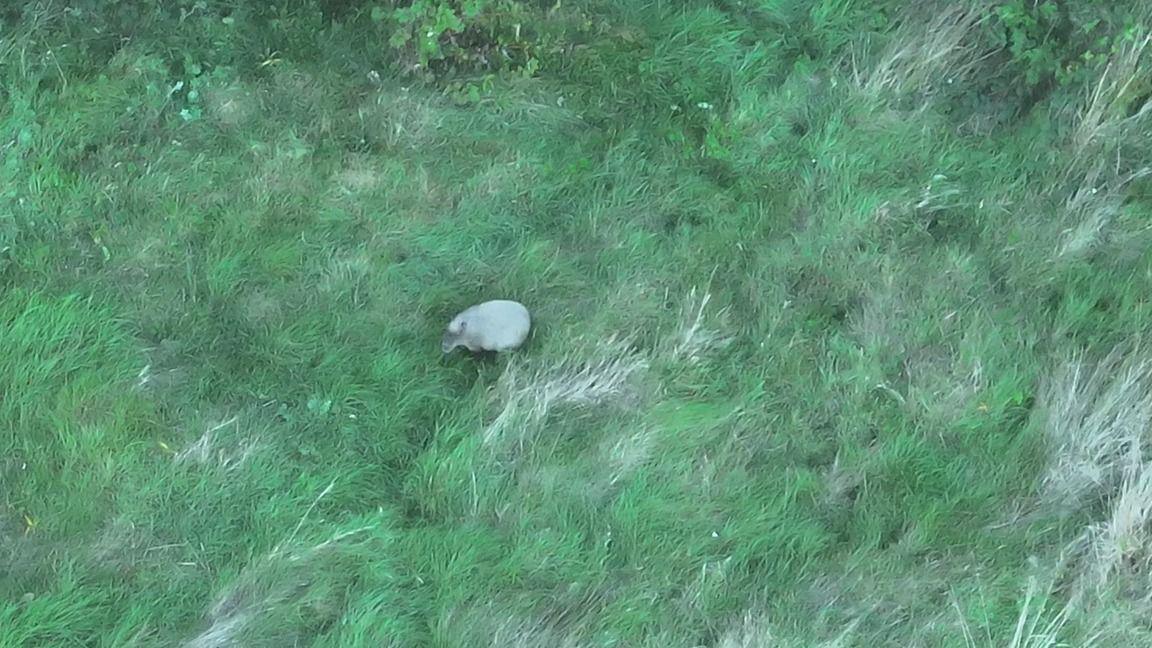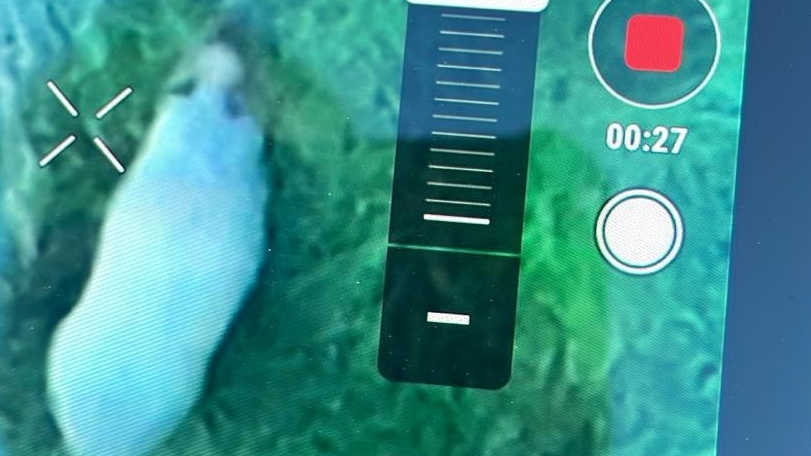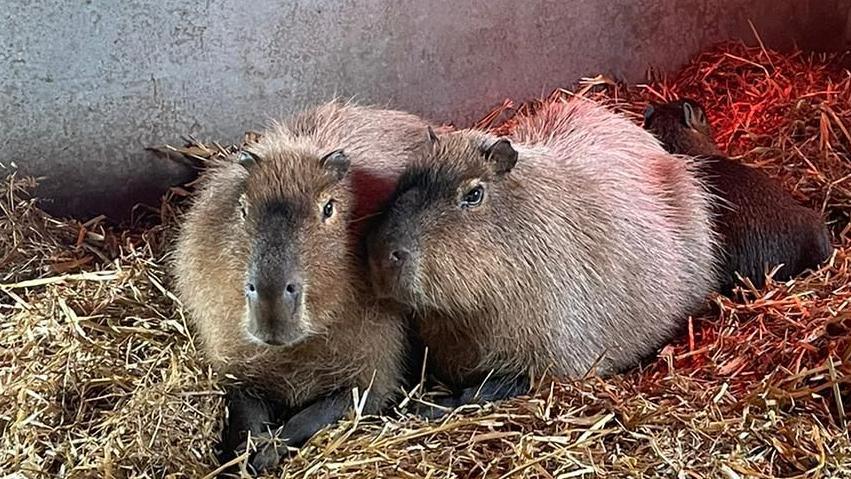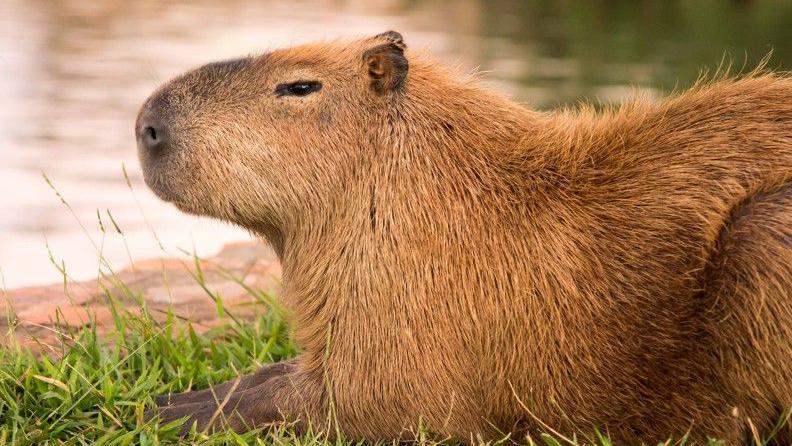Cinnamon the capybara search paused by zoo

Capybara Cinnamon has been missing from her enclosure since Friday
- Published
The search for Cinnamon the capybara, missing from a zoo since Friday, has been halted over fears she could move to a dangerous area.
She escaped from her enclosure at Hoo Zoo in Telford, Shropshire, and was last seen on Wednesday night along with fresh tracks and droppings, keepers said.
Searches for Cinnamon will resume this Friday night amid concerns that continued disturbances in the area could make her relocate.
Her current location is near a Ministry of Defence site and the zoo said they were concerned if she moved there, they might not be able to recapture her.
The capybara has been spotted for two nights in a row in a field about 200m (650ft) away from her home.
The zoo thanked people for their support and added Cinnamon "has captured the hearts of so many people from all around the world".
Listen on BBC Sounds: What will it take to lure back Cinnamon the escaped capybara to Hoo Zoo in Telford?
Cinnamon was born at the zoo alongside brother Churro and is now around one year old.
The zoo posted on Facebook: “Last night our keepers were again working through the night to try and recapture Cinnamon.
“She was spotted again by a thermal drone within 5m of the same location from Tuesday night.
“Unfortunately this area is extremely dense with almost impenetrable undergrowth that Cinnamon can easily move under but we cannot.”

The zoo said Cinnamon was comfortable where she was and they do not want to risk spooking her to move further away
They said it looked as if Cinnamon was happy where she was.
“At present she is comfortable, content, not short on food and not at risk to predators so it's better that we take our time and recapture Cinnamon with the least amount of stress possible,” they added.
The zoo said there were several live traps in the area and these would still be checked throughout the day while the search operation was paused.
Mass searches would resume on Friday night unless things changed in the meantime, they added.
Are capybaras an endangered species?
Capybara are not an endangered species, according to The International Union for Conservation of Nature
They are sometimes referred to as the giant guinea pig and they are the world’s largest rodent species
Capybaras are native to South America and can grow to more than 1m (3ft) in length
They are highly social animals and are usually found living in small herds on grassland, in tropical rainforest, as well as in wetlands across the continent
They eat grass and aquatic plants and often eat their own droppings as digesting their food a second time helps to absorb nutrients
Capybaras have webbed feet and their eyes, ears and nostrils are on top of their heads, allowing them to stay mostly submerged in water for long periods of time
(Source: World Wildlife Fund, external)
Get in touch
Tell us which stories we should cover in Shropshire
Follow BBC Shropshire on BBC Sounds, Facebook, external, X, external and Instagram, external.
Related topics
- Published18 September 2024

- Published17 September 2024

- Published16 September 2024
